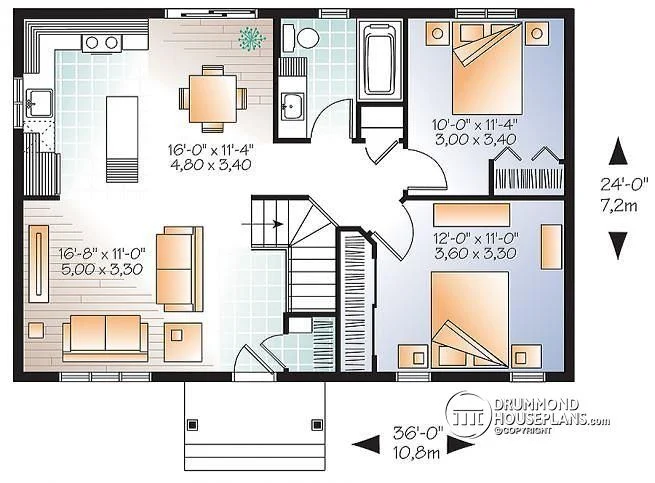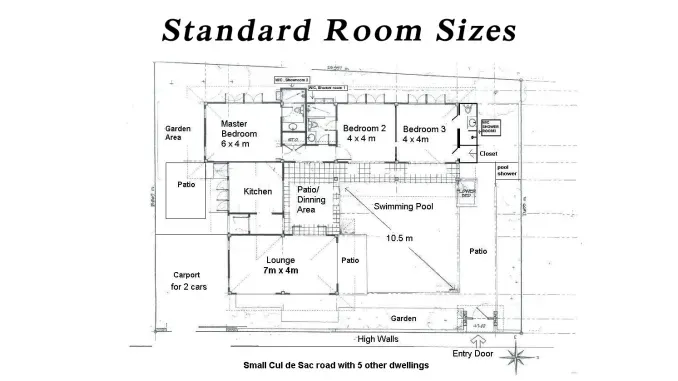How To Build An Economical Home With An Efficient Floor Plan
By Abu Rizal at: November 15, 2019
Building a home is a significant milestone in anyone's life, but it can also be an expensive endeavor.
However, with careful planning and innovative design, it is possible to construct an economical home without compromising on functionality or aesthetics.
In this article, we will explore practical strategies for building an affordable home with an efficient floor plan, ensuring that every square foot is utilized effectively while keeping costs under control.
Consider the size of your family, future expansion possibilities, and the specific requirements of each individual.
By understanding your needs, you can design a floor plan that optimizes space utilization while minimizing unnecessary construction costs.
By eliminating unnecessary interior walls, you can create larger and more flexible living areas.
The absence of walls also allows natural light to flow freely, reducing the need for artificial lighting during the day and lowering energy consumption.
Clearly define areas for living, dining, cooking, and sleeping, ensuring that each space is appropriately sized and efficiently arranged.
This approach eliminates wasted space and prevents the need for unnecessary square footage, ultimately reducing construction costs.
Consider the purpose of each room and determine the appropriate dimensions accordingly.
Avoid oversized rooms that are seldom used, as they contribute to increased construction costs without providing tangible benefits.
Similarly, aim to avoid cramped spaces that may feel uncomfortable or restrict movement.
It enhances the overall ambiance, reduces the need for artificial lighting, and lowers energy consumption.
To maximize natural light, consider incorporating larger windows, skylights, and light tubes strategically.
Additionally, orienting the home to take advantage of natural sunlight can significantly impact energy efficiency.
Consider incorporating energy-efficient design elements that will provide long-term savings on utility bills.
Install energy-efficient appliances, choose well-insulated windows and doors, and opt for sustainable materials that offer good thermal insulation.
Proper insulation and ventilation systems will help regulate indoor temperatures, reducing the need for excessive heating or cooling.
Creative solutions such as under-stair storage, wall niches, and loft areas can provide additional storage options while maintaining a clutter-free living environment.
By prioritizing functionality and employing innovative strategies, you can create a home that not only fits your budget but also enhances your lifestyle.
Remember, building an affordable home does not mean sacrificing quality or style; it means making thoughtful choices that align with your goals and values.
However, with careful planning and innovative design, it is possible to construct an economical home without compromising on functionality or aesthetics.
In this article, we will explore practical strategies for building an affordable home with an efficient floor plan, ensuring that every square foot is utilized effectively while keeping costs under control.
Assessing Your Needs
Before embarking on any construction project, it is essential to assess your needs and prioritize the features that are most important to you.Consider the size of your family, future expansion possibilities, and the specific requirements of each individual.
By understanding your needs, you can design a floor plan that optimizes space utilization while minimizing unnecessary construction costs.
Utilizing an Open Floor Plan
An open floor plan is a popular choice for economical homes as it maximizes the use of available space and promotes a sense of openness.By eliminating unnecessary interior walls, you can create larger and more flexible living areas.
The absence of walls also allows natural light to flow freely, reducing the need for artificial lighting during the day and lowering energy consumption.
Emphasizing Functional Zones
To make the most of your floor plan, designate functional zones within your home.Clearly define areas for living, dining, cooking, and sleeping, ensuring that each space is appropriately sized and efficiently arranged.
This approach eliminates wasted space and prevents the need for unnecessary square footage, ultimately reducing construction costs.
Optimal Room Sizes
When designing an economical home, it is crucial to strike a balance between room sizes and functionality.Consider the purpose of each room and determine the appropriate dimensions accordingly.
Avoid oversized rooms that are seldom used, as they contribute to increased construction costs without providing tangible benefits.
Similarly, aim to avoid cramped spaces that may feel uncomfortable or restrict movement.
Maximizing Natural Lighting
Integrating ample natural lighting into your home design offers numerous benefits.It enhances the overall ambiance, reduces the need for artificial lighting, and lowers energy consumption.
To maximize natural light, consider incorporating larger windows, skylights, and light tubes strategically.
Additionally, orienting the home to take advantage of natural sunlight can significantly impact energy efficiency.
Energy-Efficient Design
Building an economical home goes beyond initial construction costs.Consider incorporating energy-efficient design elements that will provide long-term savings on utility bills.
Install energy-efficient appliances, choose well-insulated windows and doors, and opt for sustainable materials that offer good thermal insulation.
Proper insulation and ventilation systems will help regulate indoor temperatures, reducing the need for excessive heating or cooling.
Smart Storage Solutions
Efficient use of storage space is crucial in economical home design. Incorporate built-in cabinets, shelves, and multifunctional furniture to maximize storage capacity without compromising floor space.Creative solutions such as under-stair storage, wall niches, and loft areas can provide additional storage options while maintaining a clutter-free living environment.
Conclusion
Constructing an economical home with an efficient floor plan requires careful consideration of your needs, optimal space utilization, and energy-efficient design principles.By prioritizing functionality and employing innovative strategies, you can create a home that not only fits your budget but also enhances your lifestyle.
Remember, building an affordable home does not mean sacrificing quality or style; it means making thoughtful choices that align with your goals and values.







